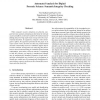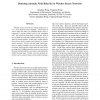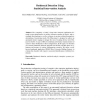98 search results - page 4 / 20 » Utilizing network features for privacy violation detection |
ACSAC
2003
IEEE
13 years 11 months ago
2003
IEEE
When computer security violations are detected, computer forensic analysts attempting to determine the relevant causes and effects are forced to perform the tedious tasks of find...
AINA
2007
IEEE
13 years 6 months ago
2007
IEEE
Wireless sensor networks are usually deployed in a way “once deployed, never changed”. The actions of sensor nodes are either pre-scheduled inside chips or triggered to respon...
SP
2002
IEEE
13 years 5 months ago
2002
IEEE
This paper shows how system-speci c static analysis can nd security errors that violate rules such as \integers from untrusted sources must be sanitized before use" and \do n...
DSOM
2007
Springer
13 years 9 months ago
2007
Springer
Abstract. The complexity of today's large-scale enterprise applications demands system administrators to monitor enormous amounts of metrics, and reconfigure their hardware as...
CCS
2010
ACM
13 years 9 months ago
2010
ACM
Capturing Fast-Flux Service Networks (FFSNs) by temporal variances is an intuitive way for seeking to identify rapid changes of DNS records. Unfortunately, the features regard to ...



